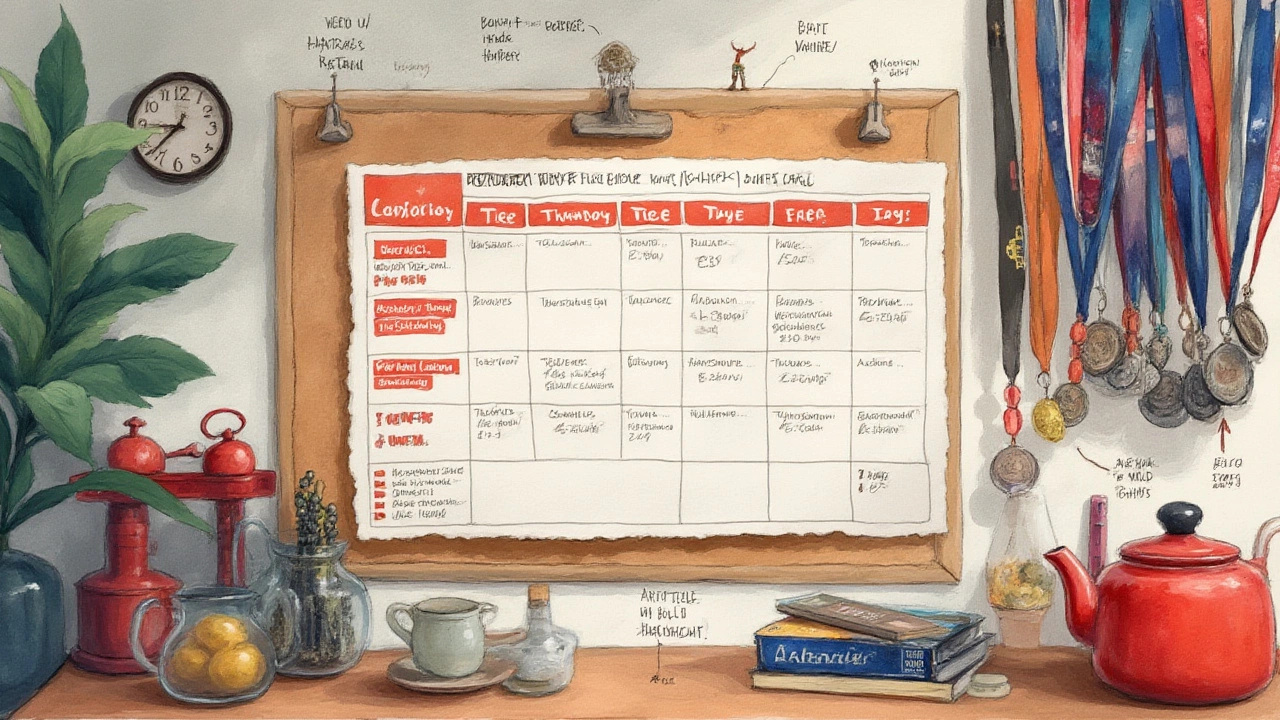
Imagine smashing your running goals without burning out or dreading your next workout. What if I told you that the world’s fastest runners spend most of their training at an easy pace—not gasping through each mile? Yep, it’s true. This secret sauce is the heart of the 80 20 training method, maybe the closest thing running has to a cheat code. Let’s get into how this method helps even everyday runners boost endurance, dodge injuries, and actually start looking forward to lacing up.
Decoding the 80 20 Training Formula
The name 80 20 training says it all: it’s about dedicating around 80% of your running time to easy, comfortably paced runs, and the remaining 20% to hard, high-intensity stuff. Sounds almost lazy, right? But here’s the kicker—scientists who’ve tracked Olympic champions found they do about the same split. An analysis from the International Journal of Sports Physiology and Performance followed elite marathoners and discovered their aerobic, low-stress runs made up the lion’s share of their workouts. These runners credit their steady improvement and fierce race-day bursts to this sharply divided approach.
But why does this work? Easy running teaches your body how to use oxygen efficiently, builds those all-important slow-twitch muscle fibers, and cranks up the capillaries feeding your working muscles. High-intensity workouts—think hill sprints or tempo sessions—help develop speed, form, and power. When you mix these at the right ratio, your body adapts without breaking down. Simple as that.
The “easy” runs in the 80% should genuinely feel light—like you could keep up a chat with a friend. If you’re gasping, you’re probably creeping into that 20%. Meanwhile, the 20% is where you unleash: intervals, tempo miles, fartleks. The method’s not just for pros; even beginners in Tamaki Makaurau or anywhere else see major gains. If you’ve ever plateaued running the same loop at the same pace, it might be time to shake things up with this formula.
Why the 80 20 Approach Works Wonders for Every Runner
One of the big shocks for most runners is just how fast you can burn out with too much intensity. The 80 20 method dramatically reduces the risk of overtraining, those dreaded shin splints, and motivation-zapping fatigue. A 2021 study checked out amateur marathoners sticking to an 80 20 plan and found they cut down injuries by a whopping 25% compared to those on higher-intensity mixes. Pretty compelling.
This polarized training approach also taps into your aerobic “engine”—making it bigger and more efficient. You know those crazy-fit folks who seem like they can just run forever? Odds are, they’ve given most of their mileage over to easy running. Training most runs at an easy pace stokes mitochondrial growth—those little energy factories inside your muscle cells. More mitochondria, more sustained energy. So not only will you go further, you’ll recover faster and feel fresher day to day.
But don’t confuse easy with ineffective. Your body learns best with repetition, not punishment. The 80 20 balance lets you stack up more total miles each week, sharpening your running economy and making those speedy workouts truly count. Suddenly, you’re not hobbling around on sore legs and dreading lacing up. You’re quietly building a solid, injury-resistant base for whatever event’s on your calendar. Here in Auckland, I’ve seen runners at every skill level—from weekend joggers on Mission Bay to trail nuts in the Waitākeres—get results with it.

What 80% vs. 20% Actually Looks Like in a Week
Okay, let’s break this down into real runs, not just theory. For someone running five times a week, that might mean four sessions at an easy, talk-friendly pace—usually about 60-75% of your max heart rate. Only one session gets the nitro treatment: a hill workout, tempo run, or set of intervals. Here’s a quick visual to help picture a typical week:
| Session | Type | Intensity | Example |
|---|---|---|---|
| Monday | Easy Run | Low (80%) | 45 mins easy |
| Tuesday | Interval Run | High (20%) | Warm up + 6x2 min hard |
| Wednesday | Recovery/Easy Run | Low (80%) | 30 mins very easy |
| Friday | Easy Run | Low (80%) | 40 mins easy |
| Sunday | Long Run | Low (80%) | 90 mins at chat pace |
Notice how only one run (the intervals) is flagged for high effort. Even the "long run" stays in that easy zone. Some folks use heart rate monitors for precise pacing, but you can also use the tried-and-true talk test. If you can’t say a sentence, it’s too hard for the easy zone.
Now, does it get boring? Not if you mix up your routes, rack up podcast playlists, or round up a running buddy. In fact, many runners love getting out for these mostly chill sessions. Plus, when it’s finally time to hit your hard session, you’re ready to push—not dragging from yesterday.
Common Myths and Mistakes with the 80 20 Training Method
Some skeptics argue that too much slow running will rob you of speed or leave you bored stiff. But study after study, including big reviews out of Norway and New Zealand, shows the opposite for most runners. Those easy miles lay the wiring for faster running later. Here’s a twist: plenty of people think they’re already using this method when, in reality, most of their runs are moderate—not truly easy or all-out hard. It’s the classic “no-man’s land,” where you never fully recover and never push hard enough to improve.
Another common goof is getting impatient. The gains can be subtle in the early weeks, and some runners bail before the magic happens. Stick with it for at least 4-6 weeks to see results, especially if you’re ramping up mileage for a big race. And don’t feel guilty keeping most of your runs slow. That’s the point. A study from 2015 tracked dozens of social runners in Wellington sticking to 80 20 and showed a sweet spot for progress: after about two months, average 10K times dropped by more than a minute, with less post-race soreness.
Others try “hacking” the ratios—going 70/30 or 60/40, assuming more hard work equals more rewards. Bad move. The extra intensity usually just leads to niggles or outright injury. Keep the split. Trust the process. Once your fitness ramps up, those hard days start to feel fun instead of fearsome.

How to Dial in Your Own 80 20 Plan—Tips for Beginners and Pros
First step: figure out your current training mix. Jot down last week’s runs—how many really felt easy, and how many left you huffing or with jelly legs? Odds are, most recreational runners land in the moderate zone too often. Shift just a couple of those to truly easy efforts, and you might instantly start feeling fresher.
For tracking intensity, you can pick from several tools. Heart rate monitors are popular: calculate your max heart rate (easy math is 220 minus your age), then aim for 80 20 training by spending most runs below 75% of that number. Or use the talk test. If you’re chatting with a mate or humming along to music, you’re probably there.
Some runners find it easier to count sessions, others by total time. Either is fine—it’s about the pattern, not perfection. And don’t skip hard days, but go for quality, not quantity. Cherry-pick workouts like tempo runs, short intervals, or fartleks (the Kiwi classic!) for that 20% intensity.
- Mix up your easy runs: trails, beach paths, or urban loops keep things interesting.
- Try a group session for your hard workout—competition brings out the best effort.
- Schedule easy runs right after hard days for max recovery benefits.
- If training for a specific race, keep the pattern but tailor sessions to the event distance.
And because rest’s as vital as running, make sure you’re logging enough sleep, good food, and the occasional recovery week. Nobody wins by grinding themselves to dust. That’s the beauty of 80 20 training: more isn’t always more. With the right mix, you could find yourself running further—and faster—than ever, all while actually loving the process.
